I read about the First Tango Congress of the Academia Nacional del Tango in a tango magazine shortly before it took place on August 27-29,2015, with time to register. The purpose was to celebrate 25 years of the Academia, founded in 1990 by the late Horacio Ferrer and housed in the Palacio Carlos Gardel in three floors above Café Tortoni on Avenida de Mayo, inaugurated in 1858. The venue was the Salon de Los Angelitos on the first floor of the Palacio Carlos Gardel, adjacent to the Museo Nacional del Tango.
There were three panel discussions on two days. The first panel was TANGO DANCE: its history and evolution with Milena Plebs, Gloria Dinzel, and Eduardo Arquimbau, followed by questions from the audience. They spoke about their personal experiences in the show Tango Argentino in the 1980s that contributed to tango’s popularity world-wide.
Gloria Dinzel talked about how boring it must be for women to dance a tanda with the same partner who does the same steps over and over, and she added “it’s the same with a man in the bedroom.” She couldn’t come up with the word “tanda” and Milena helped her out; that’s because Gloria only performed tango with her late husband Rodolfo Dinzel. Gloria’s comment drew applause from some women in the audience, but I held mine. Gloria likes flash and showing off, and their videos prove it. That’s fine in choreography. Tango for the milonga is improvised in the moment to a specific tune and orchestra, with a different partner each tanda, and the feeling is never the same. I know that Gloria hasn’t felt what I have from the milongueros who give all they have to every tango with every woman they take in their arms. They don’t perform for anyone; they share an intimate dance with the woman in their embrace. If that’s boring, then why do the milongas still exist today after 70 years and welcome so many visiting dancers from around the world?
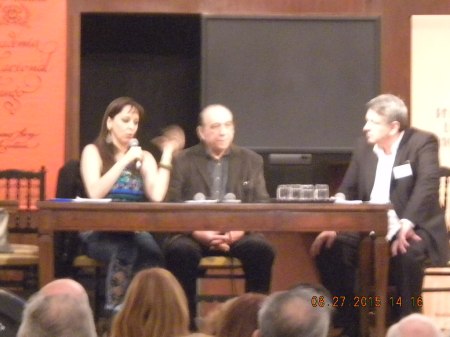
Friday’s program began with Tango and Lunfardo by Oscar Conde, Otilia da Veiga, Oscar del Priore and Alberto Romero.
Did you know that in 1943, about 80% of Carlos Gardel’s recordings could not be broadcast on the radio because they contained lyrics in lunfardo? Oscar del Priore commented on how difficult Edmundo Rivero songs with lunfardo are for him to understand; not for the milongueros viejos. He said that the 1920s and 1930s had an avalanche of tangos in lunfardo. By 1943, there was a total prohibition of tango with lyrics in lunfardo. The law prohibiting the use of lunfardo was made in 1933, ten years earlier and finally enforced. La Maleva was changed to La Mala. Grela was changed to mujer. Only a small part of lunfardo originated in jails, and most of it came from daily life among the immigrants. If you want to understand tango, you have to learn lunfardo.
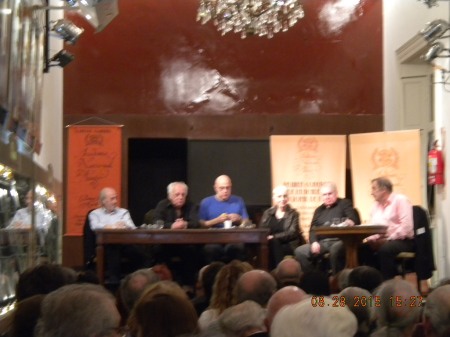
Coleccionismo: Records, Movies & Documents was presented by Enrique Binda, Carlos Puente and Gabriel Soria (president of the Academia) and moderated by Ricardo Garcia Blaya, who I’ve wanted to meet for years to thank him personally for creating Todo Tango, an invaluable website for tango.
The 78 rpm recordings of tango began in 1943, after almost 40 years with other speeds. ODEON recorded tango from 1907-1951, and then turned to folk, jazz and other popular music. Tango wasn’t profitable. Alfredo De Angeles was the first to make 33 rpm recordings with six tunes on each side. Carlos Di Sarli recorded in Peru because it was less costly to import the recordings than make them in Argentina.
Every inch of space in the Salon de Los Angelitos has something related to tango. The display cases are filled with memorabilia from dancers and collectors.
Carlos Puente is the force behind Euro Records. He meticulously digitized only the best recordings of his record collection for CD compilations. His was a labor of love, not to make money. The record producers aren’t interested in tango, even though the demand is world-wide today. You get an idea of how little they thought of tango when all the masters were destroyed without giving it a second thought.
The Congreso was filmed and projected simultaneously in an overflow room nearby.
I took a selfie with Anibal Troilo.
This statue is a tribute to the most notable bandoneonista in the history of tango.
The carved borders of the ceiling have angelic figures, for which the salon is named.
This diagram on the wall is my favorite piece in the museum. It tracks the evolution of tango orchestras by decade. It’s an amazing chart for study.
This is the main room of the museum with the history of tango’s development in text with photos and lots of memorabilia.
This is the bandoneon played by Pedro Maffia.
Only one tango orquesta used a xylophone for its distinct style. This is the instrument played in Fresedo’s orquesta.
The Congreso included the first Tango Book Fair on the third floor of Palacio Carlos Gardel.
Along the stairway are framed posters of tango greats, and I stopped to take this one of Carlos Di Sarli.
The original elevator functions in the palace. They don’t make them like they used to.
The original tile floors are works of art.
Participants of the Congreso received a portfolio with program, a copy of their quarterly magazine Pichuco (No. 2) and a CD compilation of 20 songs from various record productions by the Academia.
The Museo del Tango “Horacio Ferrer” is open to the public Monday through Friday from 14,30-19,30 hs. Contributions are accepted. The Library is open to the public from 18-20hs Monday through Friday.
Horacio Ferrer welcomes all to the Academia Nacional del Tango.

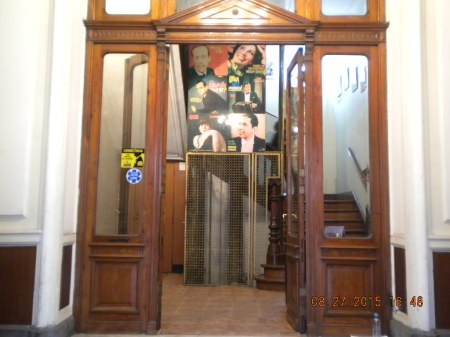


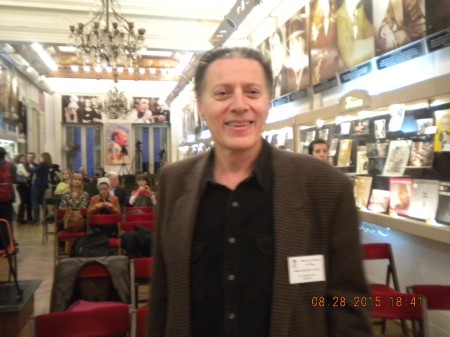









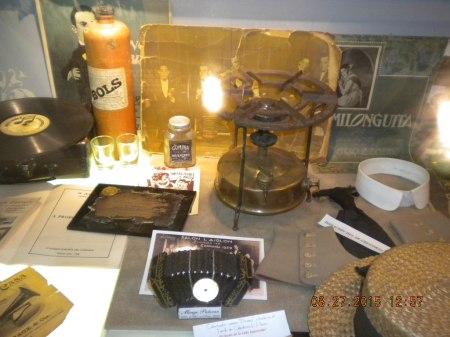





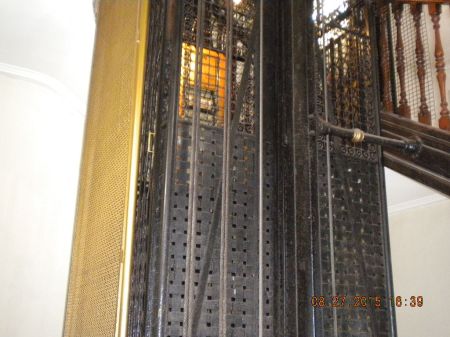


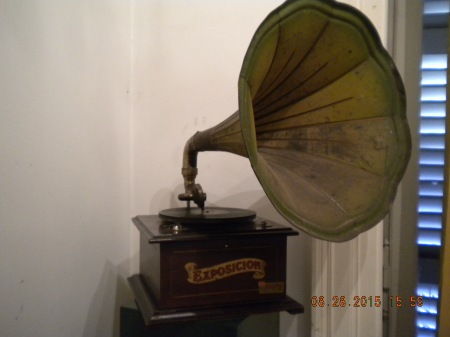

 I keep my clock radio tuned to 92.7FM Dos Por Cuatro so I wake to tango music and listen throughout the day while at my desk. One evening I heard this tango that caught my attention with its cheerful lyrics. I made a note of the title and then researched it on the Internet at TodoTango.com where I found the lyrics and listened to the 1964 recording by
I keep my clock radio tuned to 92.7FM Dos Por Cuatro so I wake to tango music and listen throughout the day while at my desk. One evening I heard this tango that caught my attention with its cheerful lyrics. I made a note of the title and then researched it on the Internet at TodoTango.com where I found the lyrics and listened to the 1964 recording by 
